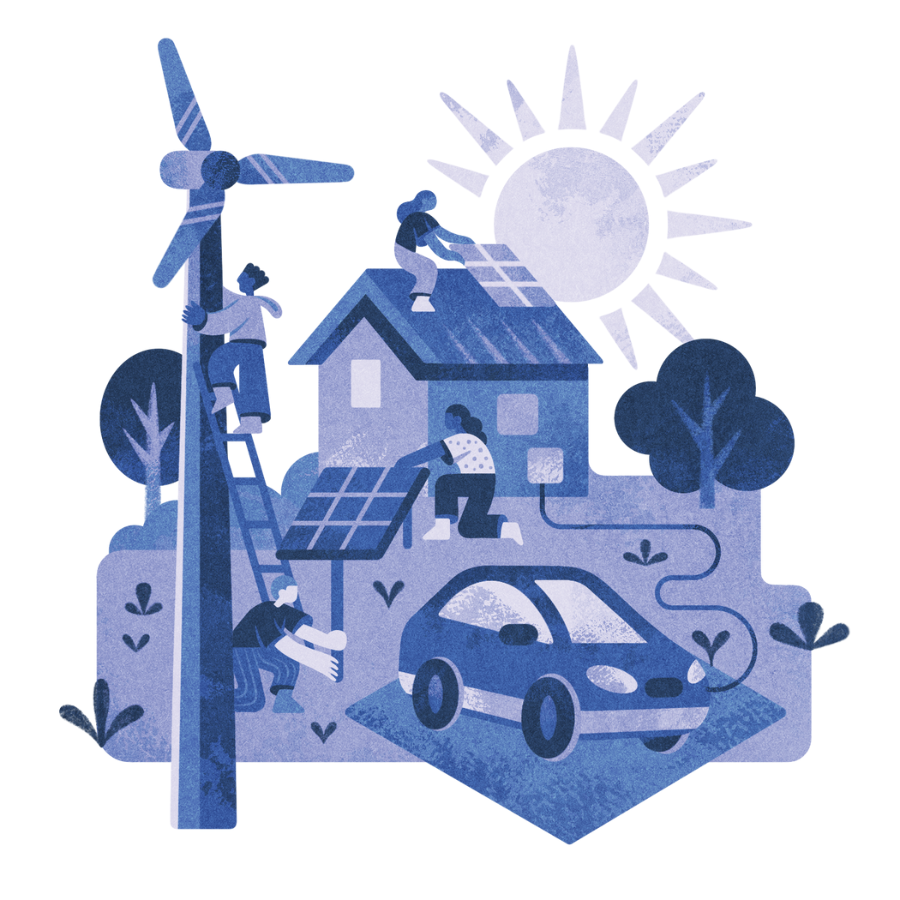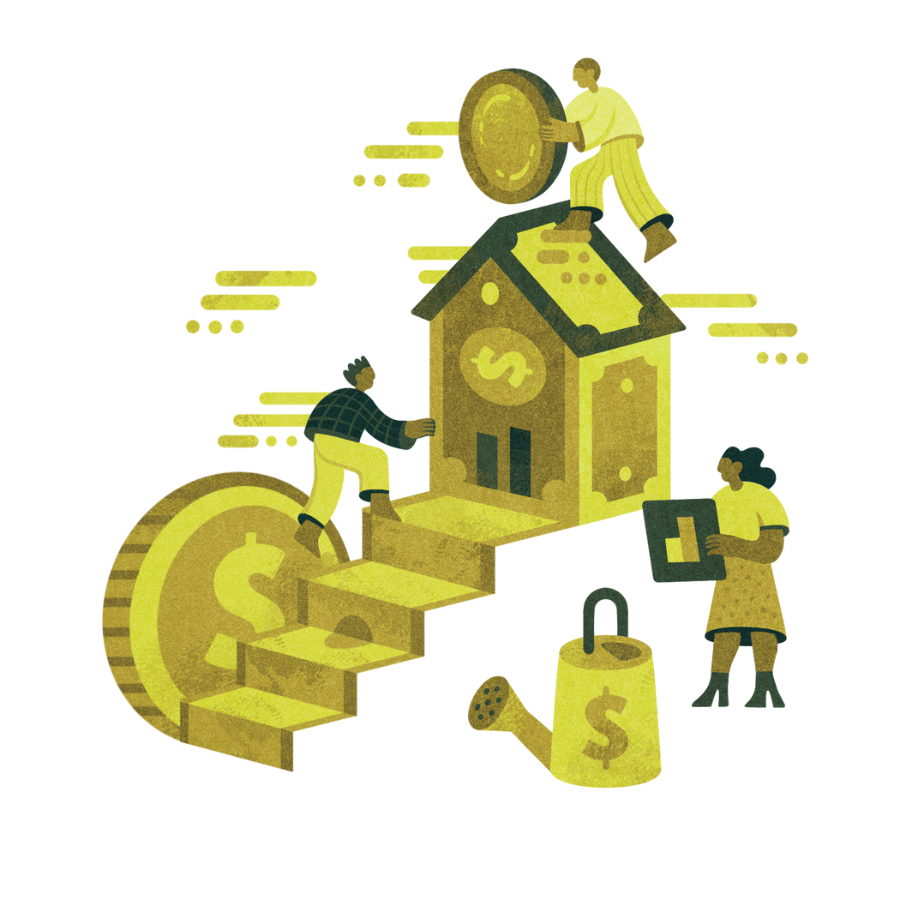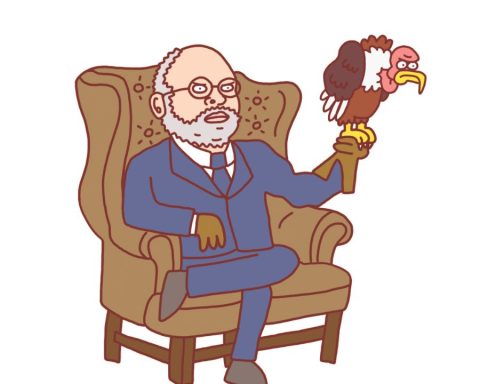When the women-only fitness club Curves opened a franchise in Kincardine, Ontario, in 2001, a number of locals flocked to join. The Texas-based company was expanding across North America, capturing a lucrative market in older women looking for non-judgmental, affordable workout spaces. And when, 12 years later, the Curves franchise in Kincardine closed shop – buckling under a rent hike and pressure from headquarters – those same women lost a valuable part of their lives.
Rather than throw in the towel, they pooled their resources, bought the leftover workout machines, rented a cheaper building on the edge of town, and opened the Kincardine Ladies Fitness Co-operative. It’s still going strong today.
Throughout history, co-ops have filled such voids: picking up where governments or companies or services have left off. But there’s a growing sense that, at this moment, co-ops could and should be playing a much more active role in the global economy. The United Nations declared 2025 the International Year of Cooperatives, highlighting the potential of cooperatives to help deliver on its largely unfulfilled Sustainable Development Goals as the clock ticks down to 2030.
Some 12% of humanity today belongs to a co-op and the numbers are growing, according to the International Cooperative Alliance (ICA), the Brussels-based body established in 1895 to represent cooperatives the world over. In an era of rising wealth disparity, autocracy and geopolitical instability, the values at the root of the cooperative model – democratic, community-based, fundamentally decent – would seem to be in short supply and high demand.
Democratizing prosperity
The cooperative movement traces its roots to the northern English town of Rochdale where, in 1844, a group of weavers who had been marginalized by the industrial revolution banded together to establish a shop that sold basic foodstuffs at affordable prices. Customers were also part owners; they had a say in the shop’s management and shared in the profits that eventually flowed.
At roughly the same time, Friedrich Wilhelm Raiffeisen, the mayor of a small town in the German Rheinland, set up what would become the world’s first credit union – a financial cooperative – to offer indebted farmers reasonable loans. The rejection of self-interested, far-away market forces, investment in community and insistence on democratic decision-making remain at the core of the cooperative identity.
Today, co-ops are often hidden in plain sight; the Associated Press, Best Western Hotels and Ocean Spray are all cooperative fixtures in their respective industries. And contrary to common conception, they often operate for profit: 42% of Canadian co-ops fall into this category. The model has leant stability to many agricultural sectors, from French wine to Italian parmesan to Canadian dairy, and has long protected the interests of certain worker groups, from seafood producers in Alaska to construction workers in Kerala, India. But it is the role cooperatives are playing in innovating and expanding vital sectors like affordable housing and renewable energy that has sparked renewed interest.
Cooperatives emerged during the golden age of traditional capitalism. What we’re seeing now feels like the end stage of capitalism. And I think co-ops may be the next big story.
— Jeroen Douglas, director general, International Cooperative Alliance
Last year, Keir Starmer’s Labour government in Britain announced plans to double the size of the country’s cooperative economy, in large part to stimulate growth in community-owned renewable-energy projects and to help the country reach its goal of a clean power grid by 2030. Decentralized technologies like wind and solar photovoltaic power are ideal vehicles for community ownership, allowing citizens to literally buy in to clean energy production. In 2000, when Denmark launched what was, at the time, the world’s largest offshore wind farm project, the government invited Danish citizens to participate; the Middelgrunden Wind Turbine Cooperative raised half of the project’s construction costs and continues to own half of the project. Wind energy in Denmark – now the source of most of the country’s electricity – has been built on the cooperative model; since 2009, Danish law has mandated that 20% of all new projects be community-owned.
Read more about the collective economy
“The beauty of renewable energy is that you can make your own,” says Chris Caners, general manager of SolarShare, which owns and operates more than 50 solar installations across Ontario. “It’s the democratization of energy, and it goes hand in hand with the democratization of business.” Since its founding in 2010, SolarShare has grown to more than 2,000 members, who have collectively invested some $80 million through solar bonds; by installed capacity, it is now Canada’s largest renewable-energy co-op.
Co-ops will also be part of the solution to the affordable housing crisis. Across major Canadian cities, rents in cooperative housing are on average 33% lower than private-sector market units. The Canadian government recently announced a $1.5-billion Cooperative Housing Development Program, which is providing loans and contributions to new and existing housing co-ops (see “Housing” story, page 33).
A new era for the co-op economy
Despite such advances, cooperative advocates lament an ongoing lack of support for the model. Daniel Brunette, director of external affairs for Co-operatives and Mutuals Canada, says this is a matter of political will. He cites Quebec, home of Canada’s largest cooperative financial services group, Desjardins, as one of the world’s most favourable jurisdictions for co-ops, where financing and insurance are readily available and cooperative associations receive consistent government support.
“In the 1970s, the provincial government really wanted to empower communities and the social economy generally,” Brunette says on the phone from Gatineau. It is no coincidence that 45% of Canada’s co-ops are located in Quebec – nor that several of the world’s most established cooperative cultures are to be found in similarly distinct societies, like Mondragon in the Basque Country of Spain and Italy’s Emilia-Romagna.
Many consider the untapped potential of the cooperative as a function of its image problem. “The Eastern Bloc regimes really soiled the concept of collective enterprise,” Brunette says, referring to a sense that co-ops are inefficient, slow-moving and ideologically encumbered. “When you say ‘co-op,’ many Canadians think of the three Hs: hay, housing and health food.” The attitude is not limited to Canada. At a recent conference in Britain, cooperative business adviser Alex Bird said he’s constantly fighting the perception that “co-ops are for people with stripy jumpers and sandals, not for normal people.”
Many consider the untapped potential of the cooperative as a function of its image problem. But those who harbour such attitudes may be left in the dust.
But those who harbour such attitudes may be left in the dust. In 2022, the United Arab Emirates passed a law designed to promote growth of the cooperative economy from 1% to 5% of its national non-oil gross domestic product, encouraging its expansion into non-traditional sectors including healthcare, education and the digital economy. Authority over cooperative regulation passed from the ministry of social affairs to the ministry of the economy in a bid to stimulate a more commercial approach: among other provisions, the law allows cooperatives to list and trade their shares on the country’s financial markets. Since its passing, the country’s cooperative sector has seen 8% growth.
Meanwhile on the global stage, the International Cooperative Alliance (ICA) has convened a group of executives representing the world’s 50 largest cooperatives – the CM50 – which will attend the UN World Summit for Social Development this November in Doha. “We will present ourselves as the obvious partner to the UN,” ICA director general Jeroen Douglas says, noting that only 17% of the targets of the Sustainable Development Goals have been met.
“Cooperatives emerged during the golden age of traditional capitalism,” Douglas says on the phone from his garden cottage in the Dutch city of Nijmegen. “What we’re seeing now feels like the end stage of capitalism. And I think co-ops may be the next big story.”
Naomi Buck is a Toronto-based writer.
The Weekly Roundup
Get all our stories in one place, every Wednesday at noon EST.










